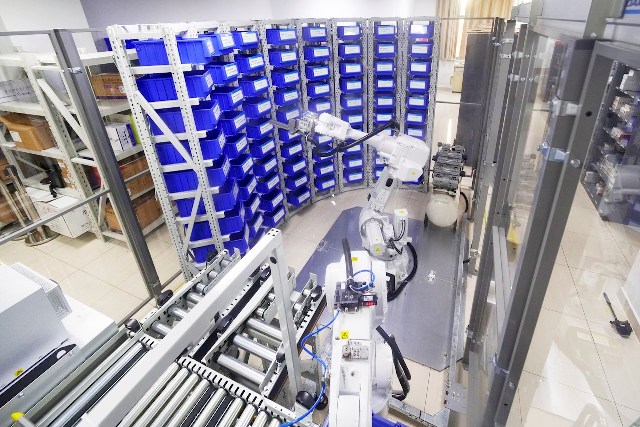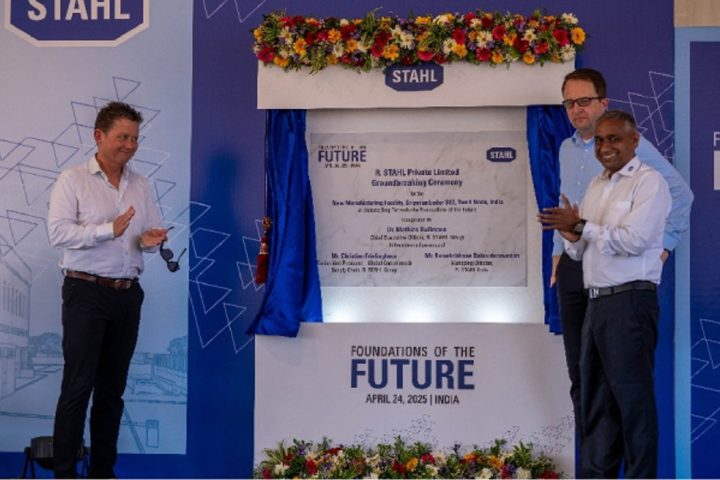by Guru Prasad, Assistant Vice President – CSSR and Electronics, Robotics and Discrete, ABB India
The explosive growth of e-commerce, which was accelerated by the pandemic has caused an increased demand for a diverse range of goods due to the rise of online ordering and home deliveries. This has led to companies re-examining their existing bricks and mortar operations as customers opt to do their shopping from home rather than venturing into stores. To address this demand logistics operators have to transform their warehouses through flexible automation.
Automation within warehouses can improve employee satisfaction, enabling employees to execute tasks quicker and more accurately, freeing them up to concentrate on value-added tasks. Therefore, warehouse automation streamlines supply chain procedures and prevents resource wastage. This article will look at the ways in which the logistics operators can transform operations through flexible automation.
Four ways that robots are transforming logistics operations
Whether as part of an FMCG end-of-line operation, retail distribution centre, e-commerce fulfilment site or parcels sorting facility, robotic automation offers a wide range of functions.
Four key areas of product handling and sorting across these and other logistics roles are:
- Item picking: Equipped with high-speed vision systems to identify product codes or other data, robotic item picking is reliable, efficient and – depending on the specified payload – compatible with items across a range of weights.
- Palletizing, depalletizing, repalletizing – Whether for cases or (more often as retailers and other businesses increasingly opt for returnable systems) for tote bins, palletizing and depalletizing are well-established robotic options. At a manufacturer’s end-of- line, in distribution centres and many locations besides, robotic systems offer fast and efficient palletizing with precise placement according to programmed pallet patterns. As well as providing reliable and secure pallet building, they avoid potential operator issues with manual handling of loads.
- Robotic storage and retrieval systems – Invaluable in an e-commerce setting where multi-product, consolidated orders need to be accurately accumulated for dispatch, a robotic storage and retrieval system uses encoded data to identify, temporarily store and match items. Again, repeat reliability is a key benefit.
- Singulation and sortation – In a parcel-sorting operation, a robot arm can be used in combination with vision systems to automatically perform singulation of packages, assess their size and redirect them for induction into the correct downstream sorting zone.
Meeting the expectations of fast delivery of anything one can think of needs a logistics operation to match. For busy warehouses and distribution centres, robotic automation has been shown to deliver a demonstrable return on investment through increased efficiency, higher throughput combined with improved accuracy – and hence, fewer returns and improved customer satisfaction. It also offers flexibility as a way of future-proofing logistics operations against changes, not only in the level of demand but also in the form it takes and the channels it uses.
Building a more flexible future
The flexibility of automation is about the ability to evolve gradually, adapting to new ways of selling and delivering goods, while also maintaining more traditional retail routes. This flexibility may also be vital to adapt to the needs of the changing seasons or handle different unit sizes.
Choosing an experienced partner in logistics automation will mean that any equipment specified will take these future possibilities into account, while also keeping today’s needs to the forefront.
How automation can help address logistics trends
Supporting the workforce
As business leaders move to put in place both short and long-term strategies to improve fulfilment and minimize the consequences of workforces being struck down by illness, many are looking to increase the implementation of automation and robotics in warehouses and distribution centres (DCs). If the supply chain is to achieve the speed, efficiency and resiliency demanded by today’s complex markets, logistic companies will need to integrate automation, digital connection, and edge technologies such as artificial intelligence and robotics. Achieving the successful integration of these technologies will be crucial to keeping supply lines open, both during normal conditions as well as times of crisis.
Given the current pressures facing today’s supply chains, we can already expect to see an accelerated uptake of automation and robotics into the distribution network.
There are likely to be more operations that operate completely autonomously. The greater changes though will come not in eliminating humans from distribution centres but rather replacing non-value-added movement with automation and robotics that can speed up processes and make them more efficient.
Managing the move towards omni-channel distribution
Omni-channel supply chains and their complex demands are well served by the capabilities of modern intelligent robots. With advanced navigation and traffic management systems and built-in sensors and scanners, autonomous mobile robots (AMRs) systems can find their way to any location in a warehouse, retrieving items and taking them to any desired destination.
AMR systems can work in a safe way with humans and other industrial vehicles. These abilities bring extra flexibility to the logistics centre as it means AMRs can easily adapt and scale to new layouts and facilities. Given the ever-evolving nature of packaging in e-commerce, AMRs offer a business the ability to change and grow as its situation demands, without the expense and disruption that adding extra fixed infrastructure can bring. The creation of industrial grade robotic function packages incorporating advances in enabling technologies, such as vision, AI and machine learning (ML) presents new possibilities for the high-speed processing of randomly presented products, with the ability to perform tasks such as autonomous gripping, singulation and sortation.
Together, these developments will help to address the rising trend towards smaller, more local warehouses located closer to the point of delivery, which need to operate quickly and flexibly.
While flexible automation is not predicted to replace the human workforce in the distribution network, robots will increasingly be deployed to streamline fulfilment processes by enabling improved utilization of labour through taking over tasks that are physically demanding and non-value adding and carrying them out faster and more efficiently.
Riding the e-commerce wave
The continued growth of online shopping will put retailers and distributors under growing pressure to automate their operations to enable fast turnaround of customer orders across a range of product types. Retailers must start undertaking the necessary measures and investments to ensure they have the capacity to cope with rising consumer demands.
For example, to overcome challenges for store fulfilment it requires to better synchronize online ordering with in-store inventory management systems, enabling to give shoppers best visibility of which products are available and which are out of stock. With the rise of hybrid facilities that separate online and in-store shopping operations, such systems become crucial. This would lead to a major shift towards retailers moving some portion of their store infrastructure into this type of dedicated fulfilment approach.
Delivering change
While the pandemic had a severe impact on the retail landscape and led to the acceleration of e-commerce, it also provided the opportunity for companies to rethink their operations to look for new and efficient ways to deliver products. Therefore, the changes in terms of companies needing to diversify their business models and use new ways to utilize technology to cope with change will remain. The pandemic also provided a justified incentive to make investments in new automated technologies that may previously have been either deferred or deemed unnecessary.
With the shift in the way that customers expect to receive products, the way that these technologies are deployed also needs to be reconsidered. The accelerating growth of omni- channel outlets, for example, may see premises such as shops being converted into pick-up outlets which are either partly or wholly automated.
What is certain is that those companies that invest in the latest automated technologies, including robots, are most likely to be best positioned to deal with the dynamic nature of consumer trends and demands., while also equipped to handle any other unprecedented situations that would make it difficult or impossible to conduct ‘business as usual’ using outdated methods and equipment.





















Follow